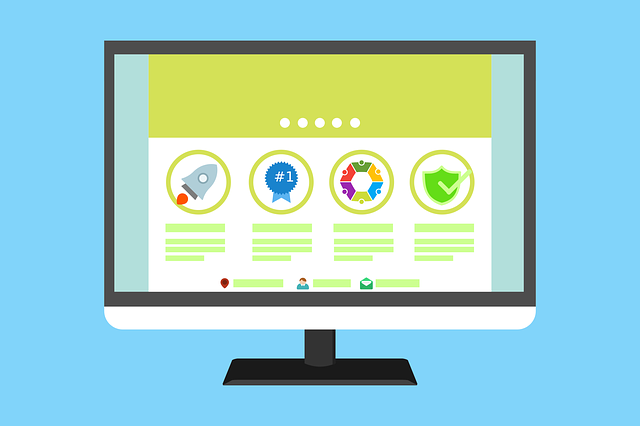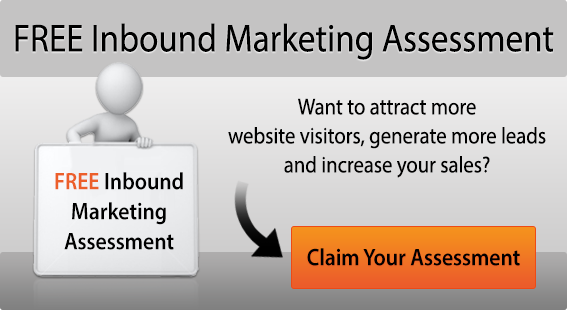A Guide to Developing the Right Inbound Marketing Strategy for Your Small Business
by Will Williamson on 26-Sep-2022 10:30:00
There is more than one way to develop a small business marketing strategy, so devising the right one for your business starts with an assessment of your growth objectives, capabilities, and the needs of your target market. In this step-by-step guide, we introduce the main points to consider and questions to ask when developing an inbound marketing strategy for your company.
1) Define Your Goals And Objectives
A solid foundation for your marketing strategy is a knowledge of what you want to achieve through marketing. Define a set of goals and objectives relative to your business and where you want to be over the next 12 to 24 months. These goals can be financial – e.g., higher sales revenues, more customers; or brand related – e.g., more social shares, higher search rankings, better brand recognition, more referrals etc. Every proposed action and marketing channel can be referred back to these goals and objectives – which can also be used to measure success and progress.
2) Define Your Unique Selling Points (USPs)
Think about the core qualities and characteristics that set your business and its products and services apart from other similar competitors in your marketplace. This is your USP, or Unique Selling point. It could be low prices, experience, quality, customer service philosophy etc, but the key to a successful USP is its uniqueness. If you offer low prices in a marketplace full of businesses claiming to offer low prices, while this may be a draw for customers, it isn’t a unique selling point, whereas if you are the cheapest business in your market, then it could be. Usually, a business’s USP isn’t that clear cut – it is a combination of different qualities that make you stand out.
3) Define Your Buyer Personas
For inbound marketing to work effectively, your content and marketing communications must be tailored to address the needs of your audience. The best way to do this is to create a detailed profile of your target customer, called a buyer persona, with enough consumer and demographic data points to form a well-rounded and accurate picture of their purchasing behaviour.
4) Define Your Value Propositions/Core Marketing Messages
Your value propositions or core marketing messages form the centre of all your marketing content, and you define them by thinking about how your USP relates to each of your target buyer personas and how it benefits them. The question to ask is ‘How would this customer benefit by purchasing my products and services?’
5) Define Your Marketing Budget
Set an affordable but ambitious marketing budget that allows you to pursue a range of inbound marketing activities in a consistent and strategic way. The average marketing spend for UK businesses is around 10% of gross annual turnover, but this varies from sector to sector. Speak with one of our inbound marketing specialists for a more accurate calculation for your industry and circumstances.
6) Define Your Inbound Marketing Channels
Think about the types of inbound marketing channels that represent the best value for money for your business. Most inbound marketing strategies use all the following channels in some way, but how each channel is used, the content you publish on each, and the weighting you give to different channels, will vary from business to business. Be guided by your target customers and the online channels they access for information.
a) Your Business Website:
The hub of your inbound marketing strategy and the source of most of your online leads. Investing in a content-rich, accessible, and search-optimised website is an essential part of inbound marketing success.
b) Your Business Blog:
Written blog content is the most valuable and effective part of your inbound marketing content arsenal and serves a range of purposes – from educating prospects and guiding them through the buyer journey, to improving your search rankings on Google, to gaining more likes and shares on social media, strengthening your brand authority and reputation, and building your website’s domain authority.
c) Your Social Media Platforms:
Social media offers business owners a free or low-priced platform for networking with other decision-makers in their sector. For B2B businesses, the best platform to use is LinkedIn, whereas B2C businesses may wish to focus their resources more on Facebook, Twitter, and Instagram. It all depends on the purchase and browsing habits of your target customers, your typical sales cycle, and the type of product or service you provide. YouTube provides a valuable platform for video hosting for both B2B and B2C businesses and can host much of your video marketing content. Your social media platforms play an important role in driving traffic to your website and can also generate leads in their own right.
d) Your Email Marketing List:
Email marketing is a cheap means of direct communication with leads who have opted into a subscriber list through your website, blog, or social platforms. It is the quickest and most effective means of lead nurturing by providing prospects with the appropriate information for their queries and concerns at each stage of their buyer journey.
e) Search Engine Optimisation (SEO) – Organic Searches:
SEO ‘optimises’ your website and content for better searchability by Google (and other search engines) bots. Bots are the software algorithms that determine a web page’s relevancy to search queries, ranking the best or most relevant search at number one, and other results lower down. The goal of SEO is to increase your Google search rank through the keywords or search terms your target customers are using to find out about your type of products and services. The more prominent you are on Google, the more website traffic you’ll get, and the more leads you will convert.
f) Pay Per Click (PPC) Advertising – Paid/Sponsored Searches:
PPC provides rapid visibility for your brand on Google (through Google Ads), or social media (via paid adverts on LinkedIn or Facebook) and can quickly raise your profile and number of inbound leads. PPC campaigns are keyword based and usually require a campaign-specific landing page for each keyword. The advert drives traffic to the landing page, on which prospects are encouraged to take an action – download an e-book, make a purchase etc – through targeted content and a compelling call to action (CTA).
Next Steps
As experienced inbound marketing specialists, at JDR Group we can help you determine the best marketing strategy for your business to obtain your goals within your budget. To find out more about inbound marketing and how to set a marketing strategy, please call 01332 343281 today.
Image Source: Canva
- Inbound Marketing (SEO, PPC, Social Media, Video) (827)
- Strategy (366)
- Sales & CRM (195)
- Marketing Automation & Email Marketing (190)
- Business Growth (165)
- Website Design (160)
- Hubspot (138)
- Lead Generation (116)
- Google Adwords (99)
- Content Marketing (94)
- Conversion (51)
- Case Studies (47)
- News (47)
- Ecommerce (39)
- Webinars (34)
- SEO (25)
- AI (20)
- Events (19)
- LinkedIn Advertising (17)
- Video (17)
- Video Selling (15)
- Software training (13)
- Niche business marketing (11)
- The Digital Prosperity Podcast (10)
- Facebook Advertising (6)
- HubSpot Case Studies (5)
- January 2026 (1)
- December 2025 (15)
- November 2025 (6)
- October 2025 (17)
- September 2025 (16)
- August 2025 (14)
- July 2025 (14)
- June 2025 (5)
- May 2025 (19)
- April 2025 (15)
- March 2025 (13)
- February 2025 (13)
- January 2025 (8)
- December 2024 (2)
- November 2024 (4)
- October 2024 (21)
- September 2024 (4)
- August 2024 (8)
- July 2024 (14)
- June 2024 (16)
- May 2024 (25)
- April 2024 (15)
- March 2024 (18)
- February 2024 (5)
- January 2024 (10)
- December 2023 (6)
- November 2023 (10)
- October 2023 (13)
- September 2023 (12)
- August 2023 (14)
- July 2023 (13)
- June 2023 (14)
- May 2023 (15)
- April 2023 (13)
- March 2023 (14)
- February 2023 (13)
- January 2023 (15)
- December 2022 (13)
- November 2022 (6)
- October 2022 (8)
- September 2022 (22)
- August 2022 (15)
- July 2022 (13)
- June 2022 (16)
- May 2022 (14)
- April 2022 (16)
- March 2022 (17)
- February 2022 (11)
- January 2022 (8)
- December 2021 (6)
- November 2021 (7)
- October 2021 (11)
- September 2021 (10)
- August 2021 (7)
- July 2021 (7)
- June 2021 (4)
- May 2021 (4)
- April 2021 (1)
- March 2021 (3)
- February 2021 (5)
- January 2021 (4)
- December 2020 (7)
- November 2020 (6)
- October 2020 (5)
- September 2020 (9)
- August 2020 (18)
- July 2020 (17)
- June 2020 (17)
- May 2020 (10)
- April 2020 (21)
- March 2020 (24)
- February 2020 (21)
- January 2020 (12)
- December 2019 (23)
- November 2019 (12)
- October 2019 (14)
- September 2019 (16)
- August 2019 (15)
- July 2019 (13)
- June 2019 (6)
- May 2019 (8)
- April 2019 (4)
- March 2019 (2)
- February 2019 (2)
- January 2019 (2)
- December 2018 (3)
- November 2018 (24)
- September 2018 (11)
- August 2018 (9)
- June 2018 (3)
- May 2018 (6)
- April 2018 (14)
- March 2018 (12)
- February 2018 (16)
- January 2018 (15)
- December 2017 (15)
- November 2017 (18)
- October 2017 (23)
- September 2017 (19)
- August 2017 (28)
- July 2017 (27)
- June 2017 (25)
- May 2017 (18)
- April 2017 (17)
- March 2017 (16)
- February 2017 (17)
- January 2017 (14)
- December 2016 (21)
- November 2016 (27)
- October 2016 (25)
- September 2016 (16)
- August 2016 (20)
- July 2016 (19)
- June 2016 (14)
- May 2016 (20)
- April 2016 (24)
- March 2016 (22)
- February 2016 (28)
- January 2016 (27)
- December 2015 (28)
- November 2015 (19)
- October 2015 (9)
- September 2015 (12)
- August 2015 (5)
- July 2015 (1)
- June 2015 (10)
- May 2015 (3)
- April 2015 (11)
- March 2015 (14)
- February 2015 (15)
- January 2015 (12)
- December 2014 (2)
- November 2014 (23)
- October 2014 (2)
- September 2014 (2)
- August 2014 (2)
- July 2014 (2)
- June 2014 (7)
- May 2014 (14)
- April 2014 (14)
- March 2014 (7)
- February 2014 (2)
- January 2014 (7)
- December 2013 (9)
- November 2013 (14)
- October 2013 (17)
- September 2013 (3)
- August 2013 (6)
- July 2013 (8)
- June 2013 (4)
- May 2013 (3)
- April 2013 (6)
- March 2013 (6)
- February 2013 (7)
- January 2013 (5)
- December 2012 (3)
- November 2012 (2)
- September 2012 (1)
Subscribe by email
You May Also Like
These Related Blogs

Why Video Marketing Is Essential For Your 2017 Business Development Strategy
If you haven’t yet experienced the power of video marketing as part of your business development strategy, then 2017 is the year to change that. Video …

Why Use Landing Pages?
With so many different digital marketing methods available, why use landing pages as part of your business development strategy? To answer this, we wi …

Boost Sales Using Content Marketing
Investing in marketing is the foremost way to increase sales and revenue for your business. One of the most effective ways of promoting your products …




